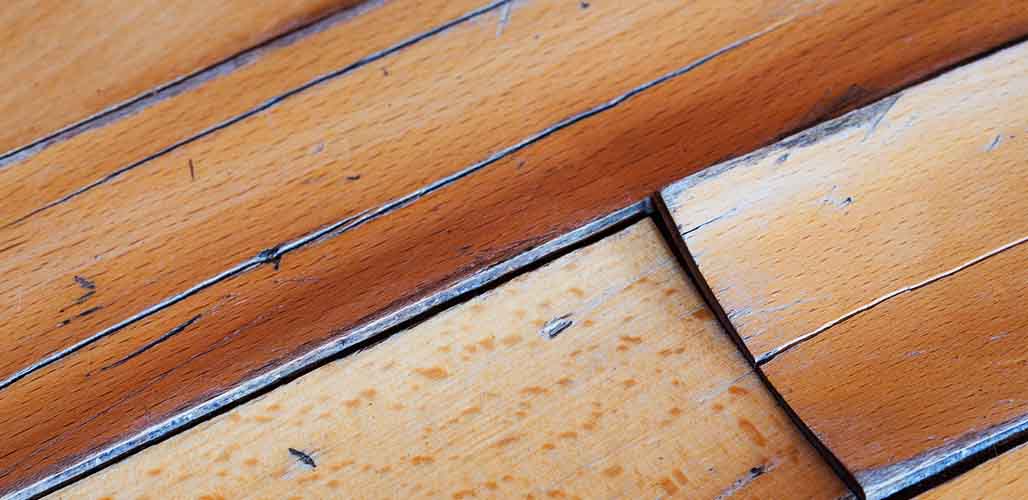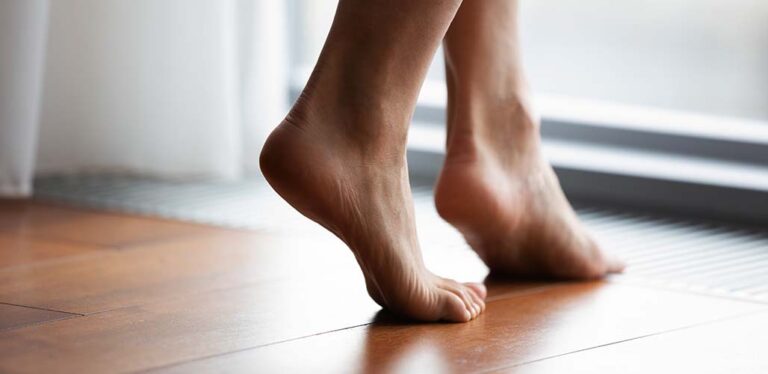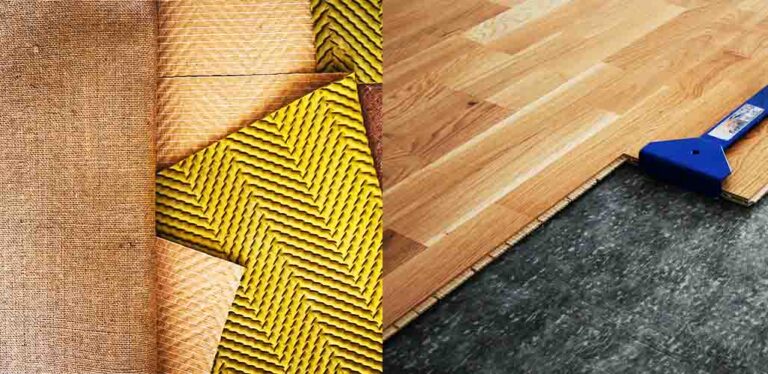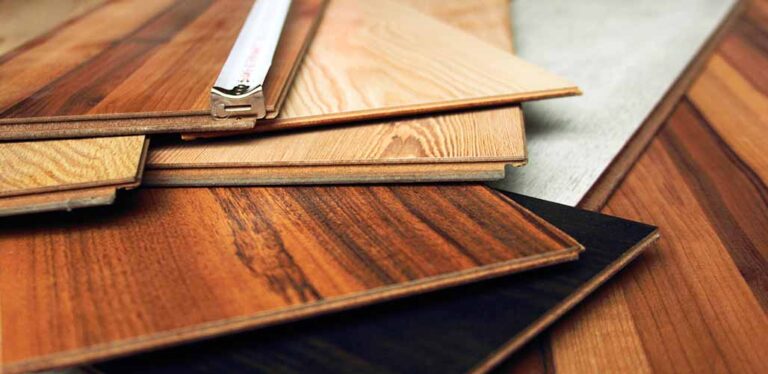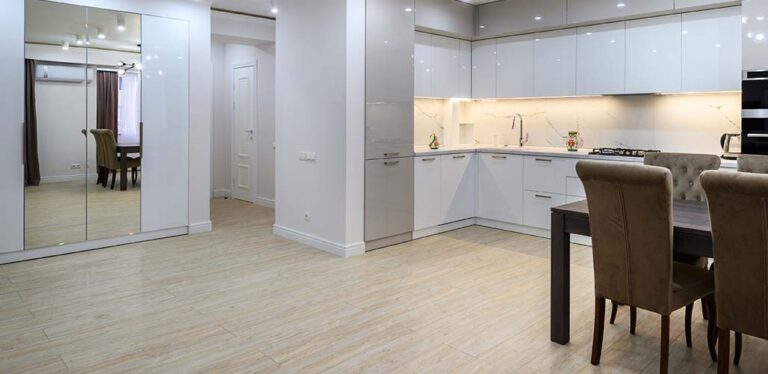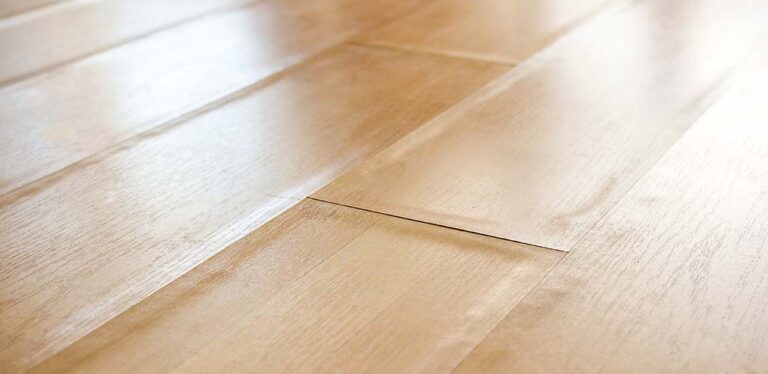Why Does Laminate Flooring Buckle?
Why does laminate flooring buckle? I chose laminate flooring in most of my home because it gives an excellent finish at an affordable cost. But, there is a downside to this trendy solution. That is – laminate’s susceptibility to buckling and warping. Buckling laminate floors will lift or arch from the floor. Some might even split. In this guide, I’ll take a closer look at why laminate flooring does this, how to fix warped plants, and how to prevent buckling in the future.
Contents
- Why does laminate flooring buckle?
- High moisture contents
- Failure to acclimate to new environments
- Lack of a moisture barrier
- Insufficient expansion gaps
- How do I fix buckling boards
- How do I prevent laminate floors from buckling?
Why Does Laminate Flooring Buckle?
Laminate flooring comes in a huge range of colors, plank sizes, and overall designs. So, you can really make your home your own and show off your creative flair. But the whole appearance of your room can change when laminate floors start to buckle. Your chic, stylish floors will start looking cheap and messy. So, it’s natural to want to fix the problem when you notice it. Here are some of the main causes of warping and buckling in laminate floors:
- High moisture content
- Failure to acclimatize
- Lack of a moisture barrier
- Insufficient expansion gaps
If you’ve owned laminate flooring for a long time, and researched proper installation extensively, you’ll probably already know about these problems. But, they can come as a surprise if you are new to laminate floors! So, let’s take a closer look at each of these issues in a bit more detail.
High Moisture Content
Warping is almost always the result of water damage. Moisture seeps into the laminates’ high-density fiber layer (core) when soaking in water. As the core absorbs the water, it expands. The expanding plank then pushes the adjacent boards, forcing the floor to curl or lift upwards.
Moisture damage could come from standing water on the surface of the floor or seepage via the concrete subfloor. Cleaning practices such as steam cleaning and wet mopping could also cause water damage.
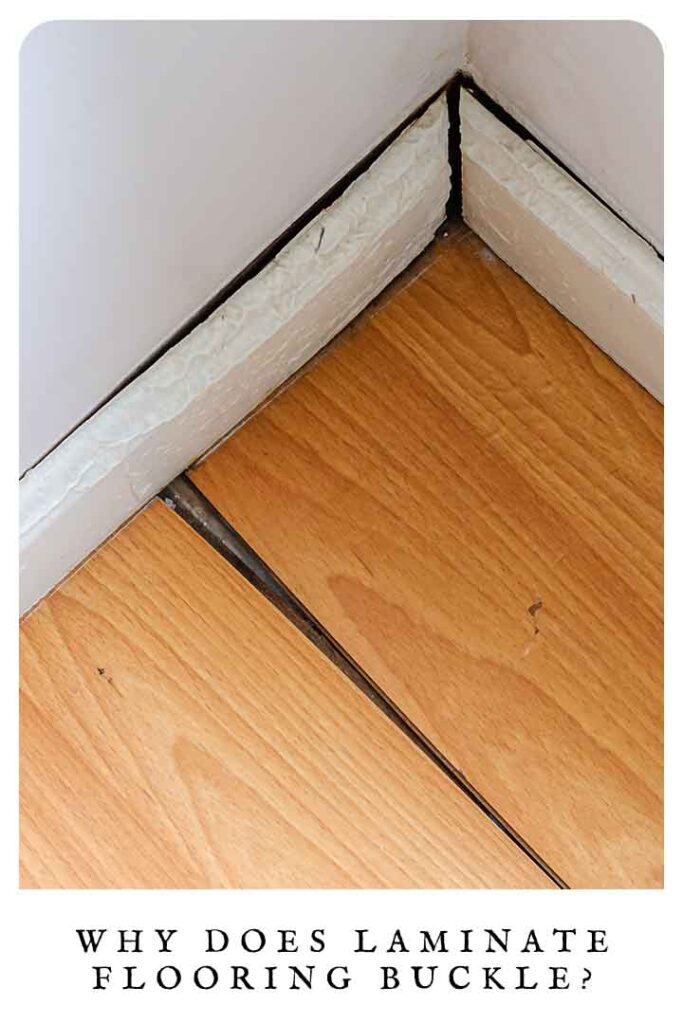
Failure to Acclimatize to New Environments
Like vinyl and hardwood flooring, laminate flooring must acclimate to its new environment’s temperature and moisture conditions. To acclimate laminates, leave the planks in their packages, lying flat on the floor, for a minimum of 48 hours before installation.
Lack of a Moisture Barrier
Before installing your laminate floors, you need to prepare your subfloor. Concrete subfloors, for example, are prone to water seepage. Install a moisture or vapor barrier to protect the laminate planks from the wet concrete subfloor.
Insufficient Expansion Gaps
Like all matter, laminate boards expand when heated and shrink when cooled. Expansion gaps are the spaces around the floor’s perimeter that allow for expansion and contraction. Many manufacturers recommend a minimum expansion gap of a quarter of an inch.
Without adequate expansion gaps, the boards will expand, pushing adjacent planks against the wall. When the expansion is restricted, a bubble forms underneath the flooring.
Here’s an example. Say you install your laminate floors in the winter. Failing to account for expansion, the technician packs the boards close together. When the planks expand in the summertime, they will have no space to move. As a result, they will curl upwards.
How Do I Fix Buckling Laminate Floors?
To fix buckled laminate floors, you must:
- Identify and fix the cause of buckling
- Replace the damaged planks
- Provide adequate expansion gaps.
1. Identify and Fix the Source of Moisture
First, you need to identify the cause of buckling. For water damage, check for discoloration on the surface of the plank or wet boards. The next step is to find and treat the source of moisture. Look out for leaking pipes and kitchen appliances (dishwashers are a common culprit). Tighten loose water joints and wipe all spills with a dry cloth.
For basements, look for peeling wall paint or wet walls. To solve this problem, waterproof your walls and apply a fresh coat of paint. For concrete subfloors, you must ensure that you have a moisture/vapor barrier underneath the laminate planks. This plastic sheet protects the laminate planks from moisture that may seep through concrete subfloors.
2. Replace Buckled Boards
You do not need to rip out the whole floor to fix a few warped boards. All you need to do is replace the buckled board in a few steps, as outlined below:
- Remove the molding adjacent to the buckled boards.
- Detach each plank’s tongue from the grove, then rip out that segment of the laminate floor. Repeat this process until you get to the buckled boards.
- Clean the surface of the underlayment.
- Replace the warped laminates by installing new laminates. Lay the boards starting from the affected area to the moldings. You can reuse the undamaged boards that you ripped out from previous steps.
- Tap the boards with a hummer and wooden block to ensure the planks are firmly set.
- Replace the molding.
3. Provide Adequate Expansion Gaps
This solution applies to buckling caused by a lack of expansion gaps. To create an expansion gap, follow the steps below:
- Remove the molding
- Trim off an appropriate portion of the flooring close to the wall. Ensure that you achieve a minimum expansion gap of a quarter of an inch.
- Replace the molding
How Do I Keep My Laminate Floors from Buckling?
To stop laminate floors from buckling, you need to consider the causes of buckling and warping. It’s definitely possible to prevent warped floors, but it can take a bit more care than you’d first think. Here are some of my top tips.
Watch out for Leakages
Check for leakages in bathrooms, kitchens, basements, and mudrooms. Check your plumbing fixtures regularly to ensure there are no leaks. Inspect your sinks, toilets, laundry machines, and heaters regularly. Inspect your basement walls for any signs of leaks and water damage. Wet walls and peeling coats of paint are signs of water seepage.
Install a Water Barrier
Install plastic sheetings before the underlayment. Also, ensure that you tape the sides of the sheet at every seam. The plastic prevents moisture seepage to the laminate floor from the concrete subfloor.
Install Laminate Flooring According to the Manufacturer’s Instruction
Use a quarter to half-inch spacer every foot along the room’s perimeter. The space allows for the expansion and contraction of the laminate flooring. But, bear in mind all laminate floors are different, so check any instructions provided.
Adopt Appropriate Cleaning Practices
Water shouldn’t sit on laminate flooring for too long. In the event of a spillage, wipe with a dry cloth immediately. Wet mopping is not recommended for laminate flooring—clean your floors with a dry dust mop.
Use Felt Pads for Heavy Furniture
Heavy furniture like pool tables, large bookcases, and pianos restrict the movement of laminate flooring. Restricted movement can cause buckling. Buy felt pads or weight-distributing coasters from piano and pool table stores.
Buy High Quality Laminates
Laminates have a transparent overlay that protects the decorative paper and the high-density fiber layers underneath. The overlayer determines the AC level of the flooring. AC stands for abrasion criteria and gives you an idea of what to expect regarding wear and tear. The higher the AC rating, the higher the abrasion resistance.
When buying laminates, you should pay attention to the structure of the overall board and the AC rating; rather than getting excited about the look and feel of the plank.
Consider Other Flooring Solutions in Wet Rooms
While laminate flooring has a higher resistance to water than hardwood alternatives, they are not waterproof. Hence installing laminate floors in rooms with frequent spills and leaks can increase the risk of buckling. Alternatively, you can opt for other flooring solutions with better water resistance.
Why Does Laminate Flooring Buckle? A Conclusion
There you have it; everything you need to know about buckling in laminate floors, how to fix it, and ways to prevent buckling. Always remember that buckling is, in most cases, due to water damage. Check for water leaks, wipe spillages immediately with a dry cloth, and you should be fine. Avoid installing laminate floors in rooms prone to frequent water spills. Apart from its susceptibility to water, laminate floors are an inexpensive flooring solution that delivers the timeless aesthetic of hardwood floors at a fraction of the cost.

